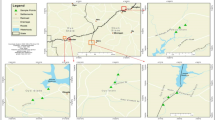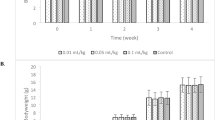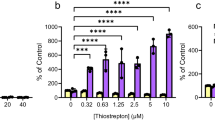Abstract
IT has been shown1–3 that high-titre diphtheria toxin can be produced by growing the Park Williams No. 8 strain of C. diphtheriae in shaking flasks, and one of us4 has reported the production of 100 Lf. u./ml. toxins in stirred and aerated cultures. Recently, using the latter technique, we have been able to prepare high-titre toxins (Lf. 150–200 u./ml.) by growing the organism for 48 hr. in 14-litre amounts of tryptic digest medium1 in 20-litre ‘Pyrex’ flasks stirred by either a glass or a ‘Birmabright’ (a magnesium–aluminium alloy) stirrer with air bubbling through the cultures from an ‘Aerox’ filter (porosity P 28) at the rate of one-sixth litre of air per litre of medium per minute. Such culture filtrates contain 1,500–1,700 Lf./mgm. protein nitrogen and are, therefore, very suitable starting material for the further purification of the diphtheria toxin. Moreover, the antigen composition of the culture filtrates, concentrated by ultrafiltration, when examined by a gel diffusion test against antitoxin5, was found to be as complex as in surface-culture filtrates; but the amounts of the contaminating antigens were less, thus explaining the higher purities obtained from submerged cultures.
This is a preview of subscription content, access via your institution
Access options
Subscribe to this journal
Receive 51 print issues and online access
$199.00 per year
only $3.90 per issue
Buy this article
- Purchase on SpringerLink
- Instant access to full article PDF
Prices may be subject to local taxes which are calculated during checkout
Similar content being viewed by others
References
Linggood, F. V., and Fenton, E. L., Brit. J. Exp. Path., 28, 354 (1947).
Mitsuhashi, S., Kurokawa, M., and Kojima, Y., Jap. J. Exp. Med., 20, 261 (1949).
Howatt, F. F., and Reed, G. B., Canadian J. Research, 28, 23 (1950).
Linggood, F. V., VIth International Congress for Microbiology, Rome (1953).
Pope, C. G., Stevens, M. F., Caspary, E. A., and Fenton, E. L., Brit. J. Exp. Path., 32, 3, 246 (1951).
Chain, E. B., Paladino, S., Callow, D. S., Ugolini, F., and Van Der Sluis, J., Bull. World Health Org., 6, 73 (1952).
Author information
Authors and Affiliations
Rights and permissions
About this article
Cite this article
LINGGOOD, F., MATTHEWS, A., PINFIELD, S. et al. Submerged Culture Production of Diphtheria Toxin. Nature 174, 557 (1954). https://doi.org/10.1038/174557a0
Issue date:
DOI: https://doi.org/10.1038/174557a0



